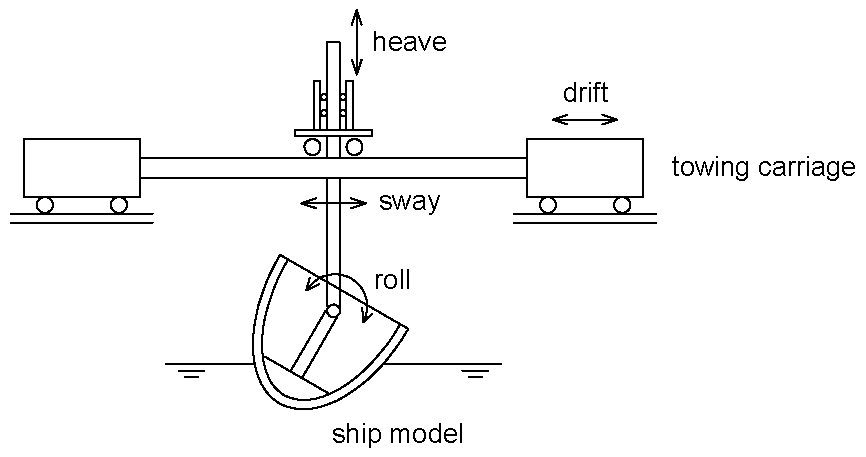4.5.2.1 Tests in regular waves can be used to
directly obtain the “regular waves roll-back angle” Φ
1r
• Φ
1r
is the peak
roll response of the ship in regular waves of steepness according
to table 4.5.1. In order to determine Φ
1r
,
the stationary roll motion amplitude should be measured for a sufficient
number of frequencies around the natural roll frequency ω
0 = 2π/T
Φ
.
The following minimum set of test points is recommended ω/ω
0 = 0.8, 0.9, 0.95, 0.975, 1.0, 1.05, 1.2, with ω being the frequency of the regular wave in rad/s. Additional
measurements in the proximity of the response peak might be necessary
to allow for an accurate determination of Φ
1r
especially
in case of strong influence of righting lever non-linearity.
4.5.2.2 During the tests the ship model should
be positioned to be normal to the direction of the waves (90°
heading angle). The heading angle of the model is either:
-
.1 fixed, with a guide attached to the towing
carriage keeping the sway-heave-roll motion free from restraints.
An example of experimental arrangement is shown in figure 4.5.2.2.
The carriage should trace the drift motion of the model induced by
the beam wave’s action. Draught, GM and TΦ
should be adjusted taking into account the effect of the guide; or
-
.2 controlled by guide ropes which are fitted
to the model on the centreline at the stem and stern, in a symmetrical
fashion and at a vertical height between the waterline and the centre
of gravity. These lines can be used to correct the model in yaw while
allowing drift and sway, provided the heading during tests does not
deviate from beam sea for more than 15°. However, whenever the
yaw motion is corrected by means of the ropes, the corresponding part
of the measured record should be neglected in the subsequent analysis,
unless the effect of correction on the quantities of interest is clearly
negligible.

Figure 4.5.2.2 An example of the guide for roll test in beam waves
4.5.2.3 During the tests, care should be taken
to use appropriate time windows for the measurements, so that the
steady roll amplitude is measured without the influence of reflected
waves between the model and the wave maker or the model and the beach.
4.5.2.4 Data to be recorded are model motions
in all measured degree of freedom (DOF) and wave elevation.